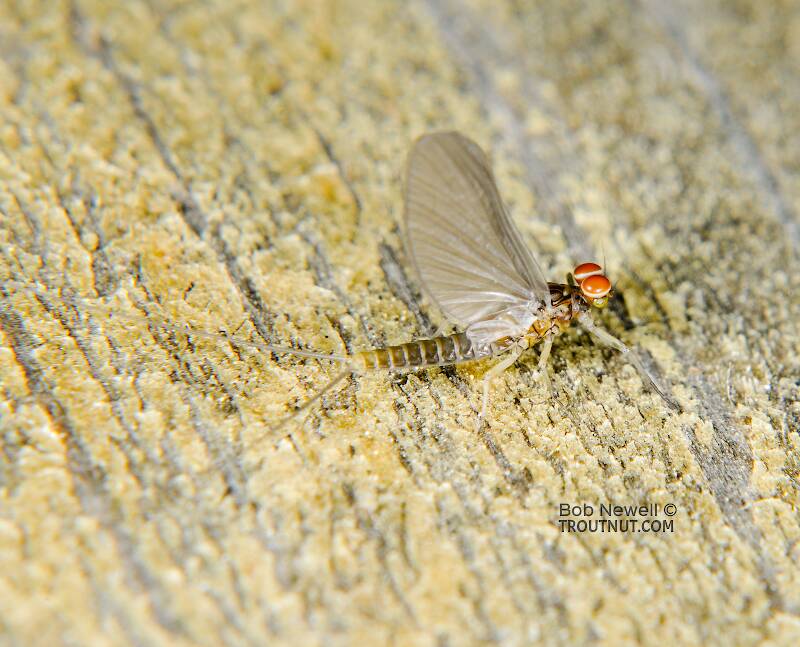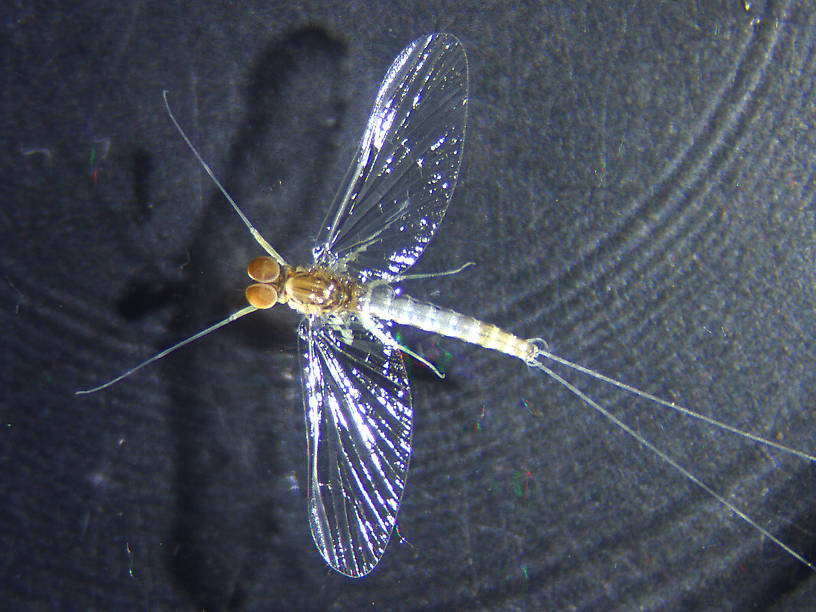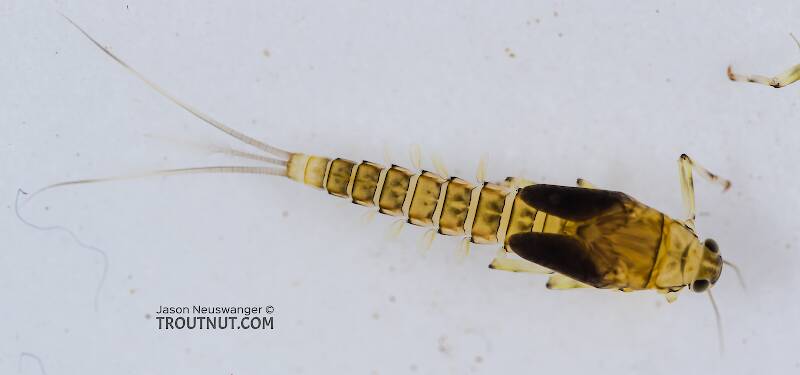
Hex Mayflies
Hexagenia limbata
The famous nocturnal Hex hatch of the Midwest (and a few other lucky locations) stirs to the surface mythically large brown trout that only touch streamers for the rest of the year.
Featured on the forum

I was not fishing, but happened to be at an unrelated social event on a hill above this tiny creek (which I never even saw) when this stonefly flew by me. I assume it came from there. Some key characteristics are tricky to follow, but process of elimination ultimately led me to Sweltsa borealis. It is reassuringly similar to this specimen posted by Bob Newell years ago. It is also so strikingly similar to this nymph from the same river system that I'm comfortable identifying that nymph from this adult. I was especially pleased with the closeup photo of four mites parasitizing this one.

Troutnut is a project started in 2003 by salmonid ecologist Jason "Troutnut" Neuswanger to help anglers and
fly tyers unabashedly embrace the entomological side of the sport. Learn more about Troutnut or
support the project for an enhanced experience here.
Light Blue Duns
This common name refers to only one species. Click its scientific name to learn more.
Mayfly Species Baetis tricaudatus
These are very rarely called Light Blue Duns.
Baetis tricaudatus is undeniably the most widespread and abundant baetid on the continent and arguably the most important mayfly species to trout and anglers alike. Eastern anglers used to know these important mayflies by the storied name of Baetis vagans. Conversely, the usually much larger and late Fall hatching brood of Baetis tricaudatus was considered an important Western species with its own tradition. But, entomologists recently determined that they are both in fact the same species. The nomenclature conventions guiding entomologists do not account for a name's regional fame among fishermen, and new or obscure species names may replace their old favorites. Sometimes taxa with disparate traditions are combined. Baetis vagans is one such casualty. Fortunately, trout think like Shakespeare: A rose by any other name would smell as sweet. The rose that was vagans has lost none of its charm. This species is multibrooded with the hatches of Spring being larger flies. As the weather warms the following broods are composed of progressively smaller flies. In the East, they range in size from 16 to 20. In the West, they may run a size larger.
See 10 more specimens...




